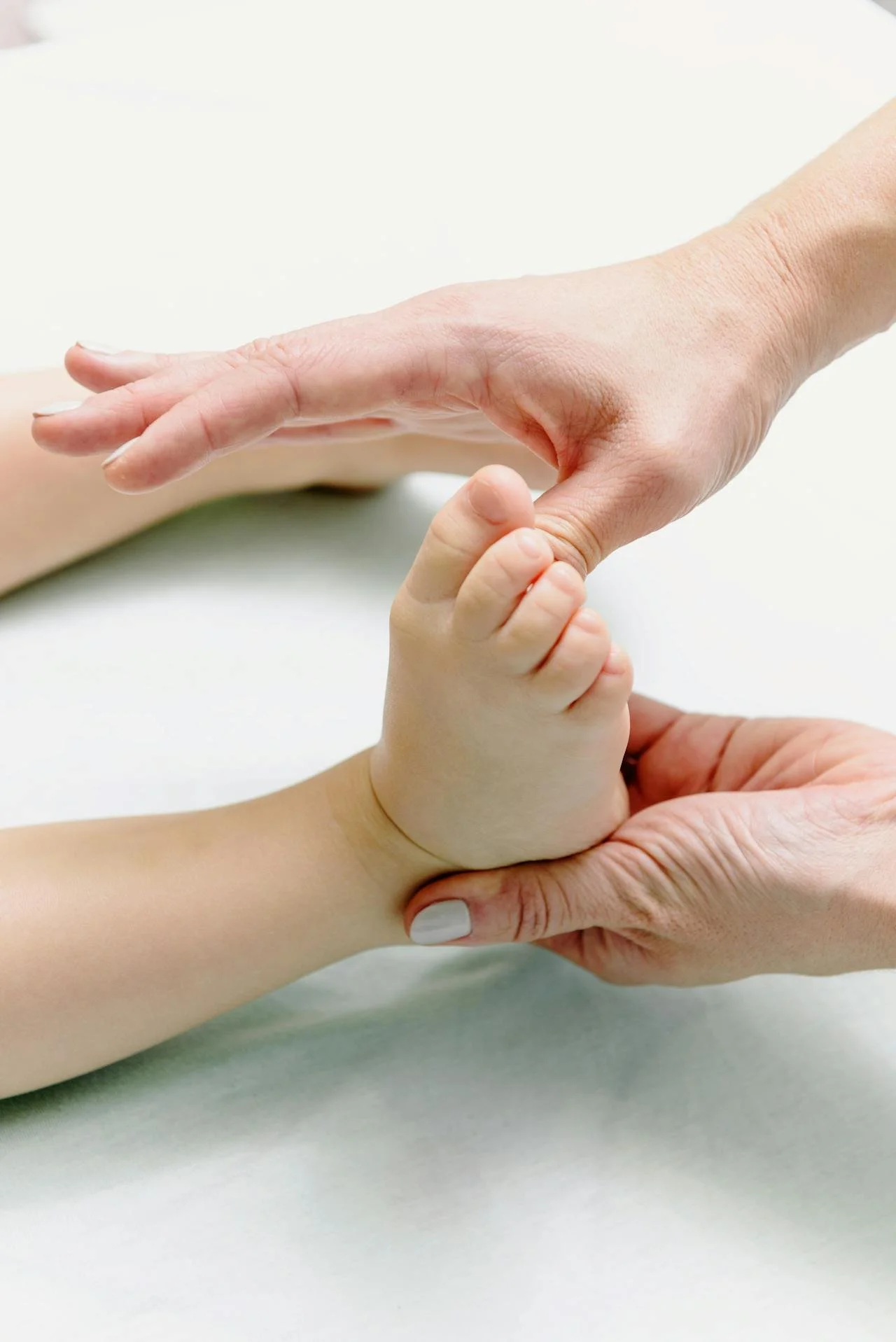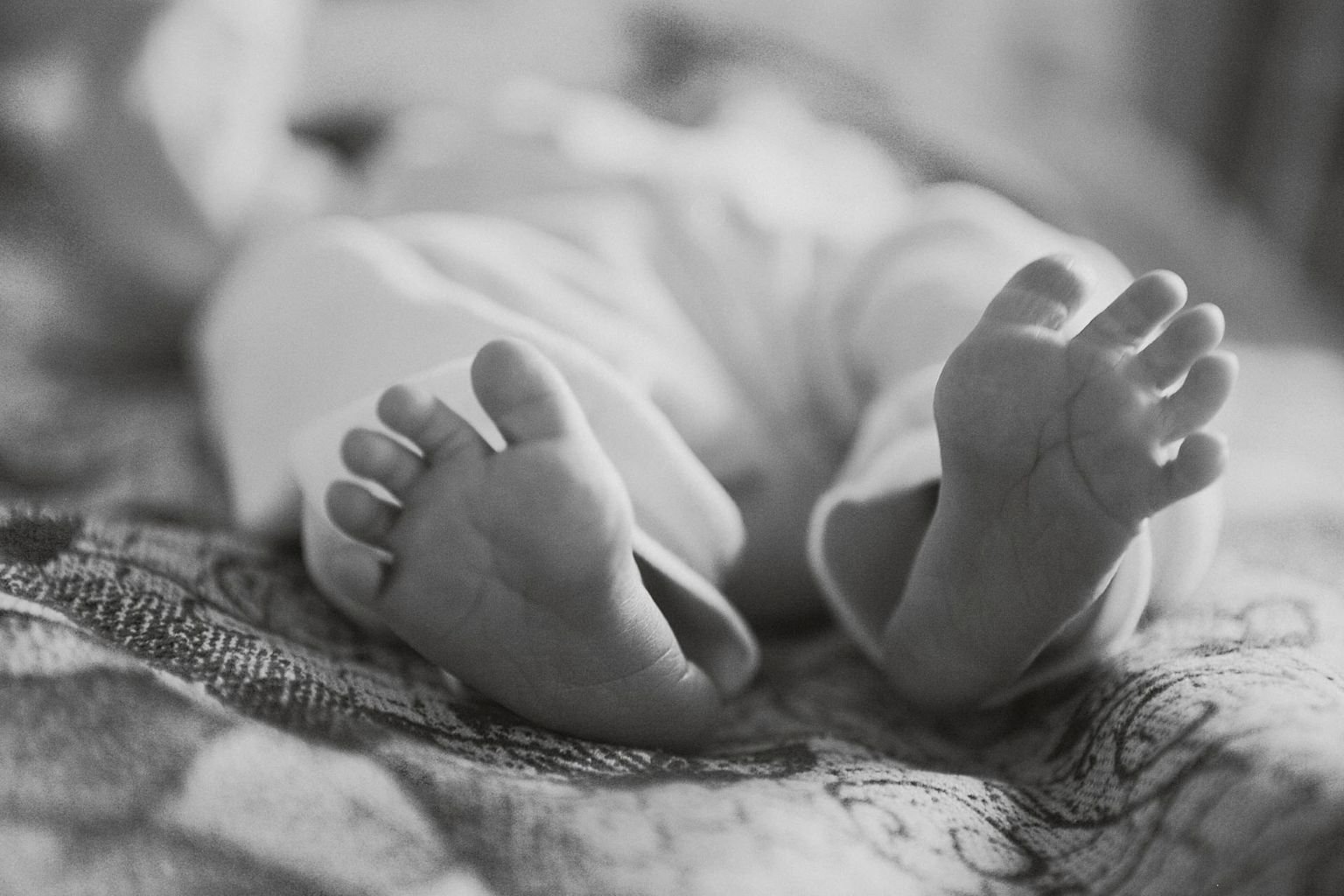Babinski Reflex In Babies: What Is It?
What is the Babinski Reflex
Becoming a parent opens up an entire world of wonder. From first smiles to the tiniest, cutest toes.
But if you’ve ever seen your baby’s toes fan out when the doctor strokes the bottom of their foot, you might’ve paused and thought, “Wait, is that normal?”
That reaction is called the Babinski reflex. It’s one of the many fascinating ways your baby’s developing nervous system communicates with you.
Understanding what it means, when it should appear or disappear, can help you feel more confident about your baby’s growth and health.
What is the Babinski Reflex?
The Babinski reflex (or plantar reflex) is a totally normal response in newborns and young infants.
How to test Babinski reflex - when the sole of your baby’s foot is gently stroked, usually from heel to toe along the outer edge.
You’ll notice the big toe extend upward while the other toes fan outward like a tiny starfish.
It might look surprising, but rest-assure, this reflex is one of the many built-in developmental checks your baby comes with.
Pediatricians use it to see how the brain and spinal cord are communicating. Especially the corticospinal tract, which is responsible for voluntary movement.
The reflex was first described in 1896 by French neurologist Joseph Babinski, and it’s still one of the simplest ways doctors assess early neurological development.
Because your baby’s nerves are still maturing and becoming “insulated” (a process called myelination), their motor control works a little differently.
The Babinski reflex is one visible sign of that natural, healthy immaturity (Harris & Tindall, 2020).
So if you see those toes spreading, smile. It’s your baby’s nervous system saying, “I’m still growing, and I’m right on track.”
Babinski Reflex in Babies
Is a Negative Babinski Reflex Bad?
This is a question many new parents have. Especially after a doctor mentions the word negative during an exam. But don’t worry, it’s not what it sounds like.
When doctors describe a negative Babinski reflex, they’re referring to a downward curl of the toes instead of that fanning-out motion.
Babinski reflex in newborn babies, a negative Babinski reflex is unusual because their nervous systems aren’t mature yet. We expect to see that upward movement.
But in older infants, toddlers, and adults, a negative Babinski reflex is exactly what we want to see.
It means the nervous system has fully developed and is working efficiently (Ropper & Samuels, 2019).
In other words, what’s “normal” depends on age:
In babies: A positive Babinski (toes fan out) is good and expected.
In adults: A negative Babinski (toes curl down) is healthy and normal.
If your baby shows a negative Babinski reflex early on, your pediatrician might take a closer look, but it’s rarely cause for panic on its own.
This test is just one small piece of the big picture of your child’s development.
When Does Babinski Reflex Disappear
When Does Babinski Reflex Disappear?
The Babinski reflex disappears usually between 12 and 24 months. Keep in mind the timing can vary for every child (American Academy of Pediatrics, 2021).
What’s happening behind the scenes is beautiful: your baby’s brain and nervous system are wiring themselves for more advanced movement.
As those nerve fibers become fully myelinated, the brain gains more control over voluntary motion.
This means the fanning-toes reflex gradually gives way to the adult pattern of the toes curling downward instead.
If the reflex is still present after age two, your pediatrician might recommend some additional neurological checks. But most of the time, it disappears naturally and right on schedule.
Important note for parents: don’t try to test this reflex at home. It can be uncomfortable for babies if done incorrectly, and interpreting the results takes professional training.
Your pediatrician includes it in well-baby checkups for a reason and they know exactly what to look for.
Babinski Reflex in Adults: Is it Normal?
By adulthood, the Babinski reflex should be gone.
So if an adult shows a positive Babinski reflex, it can indicate a problem in the upper motor neurons, the nerve pathways that send messages from the brain to the spinal cord (Adams & Victor, 2018).
Doctors sometimes look for this reflex as part of a neurological exam when investigating conditions like stroke, multiple sclerosis (MS), ALS, or spinal cord injuries.
A positive Babinski reflex in an adult doesn’t diagnose these conditions on its own.
It’s just one clue among many that helps doctors pinpoint where something might be happening in the nervous system (Kumar & Clark, 2022).
Interestingly, a temporary Babinski response can appear in adults after a seizure, during deep sleep, or under anesthesia.
It usually goes away once the nervous system returns to normal function.
So, to quickly recap:
Babinski reflex in babies = normal
Babinski reflex in adults = not normal
That’s why it’s such an important developmental milestone. Its presence early on is healthy, but its disappearance later is just as vital.
Babinski Reflex in Newborn
Your Baby’s Nervous System Working Together
You now have the answer to the question: what is the Babinski reflex? It’s one of those small but powerful signs of your baby’s growing nervous system.
In the beginning, it’s perfectly normal for those tiny toes to fan outward.
Over time, as your baby’s brain and body learn to work together, that reflex will fade away, just like so many of the early newborn reflexes.
As a parent, it’s easy to overanalyze every twitch and reflex. But understanding what these responses mean helps to replace worry with wonder.
The Babinski reflex is your baby’s body telling you, “I’m developing just the way I should.”
So next time you’re at a checkup, and your pediatrician gives your baby’s foot a little stroke, you’ll know exactly what they’re looking for and why it matters.
Parent Homework:
If you’re a new or first-time parent, keep learning about your baby’s development, one milestone at a time. Ask your pediatrician questions, stay curious, and celebrate every stage.
From the first fanned toes to the first steps.
These small signs are part of your baby’s incredible neurological journey and you’re right there for every beautiful moment of it.
RELATED: Is It Bad For A Baby To Walk Early?
Quick References
American Academy of Pediatrics. (2021). Developmental milestones: Reflexes in infancy.
Babinski, J. (1896). Sur le réflexe cutané plantaire dans certaines affections organiques du système nerveux central.
Harris, M., & Tindall, S. (2020). Neurological Examination of the Newborn and Infant. Journal of Child Neurology.
Kumar, P., & Clark, M. (2022). Clinical Medicine (10th ed.). Elsevier.
Ropper, A.H., & Samuels, M.A. (2019). Adams and Victor’s Principles of Neurology (11th ed.). McGraw-Hill.
Adams, R.D., & Victor, M. (2018). Principles of Neurology.



